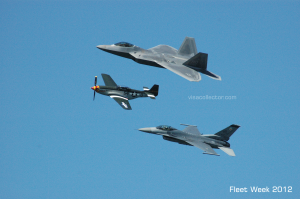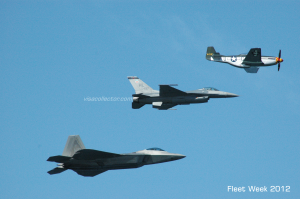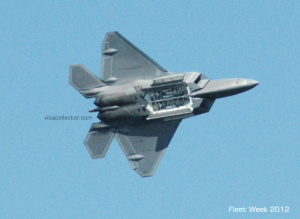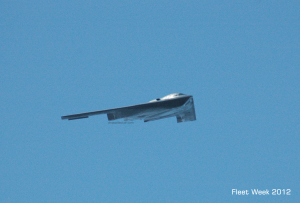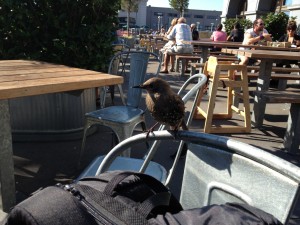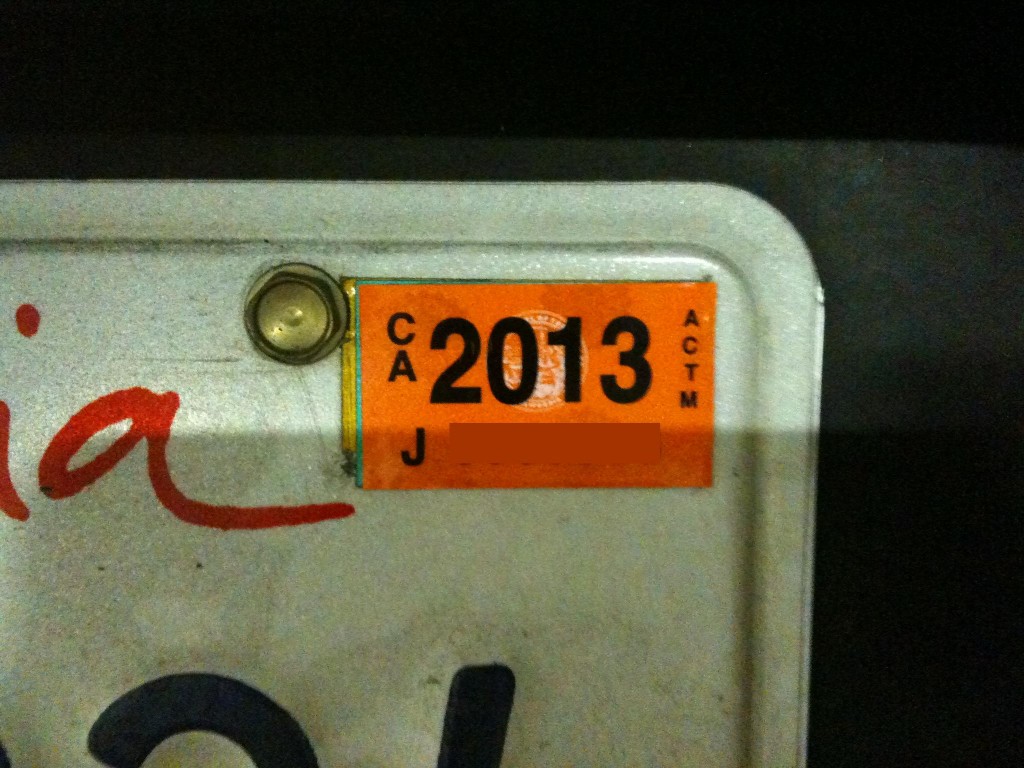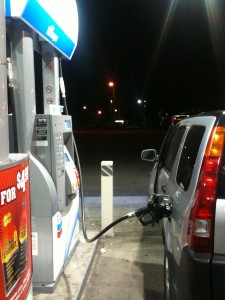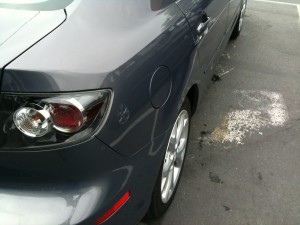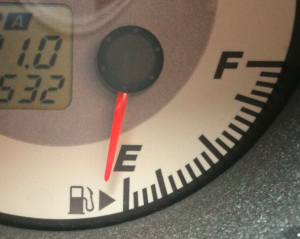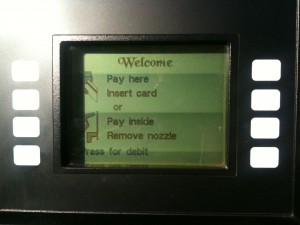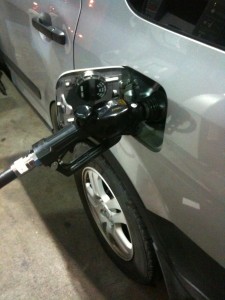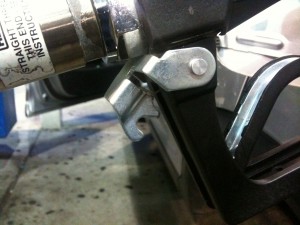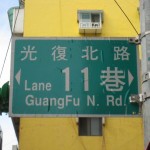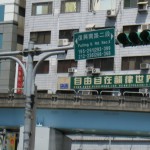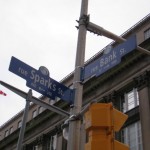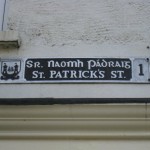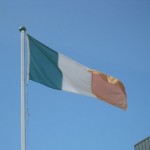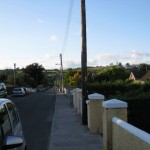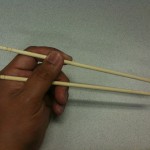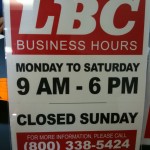A few years ago, my brother and his wife visited us for a few days. We don’t live in one of the major bay-area cities, so we had to drive a fair distance to see the sights. From the Golden Gate bridge in San Francisco, to the world-famous aquarium in Monterey.
The first time we stopped for gas, my brother got out of our CR-V with me to watch me fill up. “It was about time I learned how to fill up by myself”, he said. That caught me by surprise. He moved to the US east coast back in 1993, 11 years before I did, so this just didn’t compute.
Until that visit, I had come to believe that unattended gasoline stations, save for a solitary employee manning the cash register, were the norm for the US as a whole. I had come to accept this as just one of many things that set this country apart from the Philippines, where gas attendants abound.
That apparently wasn’t the case. My brother’s home state of New Jersey, for example, still had attendants. A co-worker would later share that there are actually some states that don’t allow drivers to pump fuel themselves.
I learned to operate a fuel pump on my second day in California. My boss back then walked me through the process of getting my first rental car, and immediately afterward led me to a gas station and taught me to work the pump. To this day, I flip the nozzle to drain residual fuel from the hose into my tank — just as she taught me that sunny 3rd of May.
The fill-up process is straight-forward for most gas machines. However there are less-than-well-designed ones out there that will will require a bit of probing. But the basic operating steps pretty much remain the same.
The approach
When driving up to a machine, it usually helps to know which side of your car permits access to the gas tank. This probably isn’t much of a concern when driving your own car. But if you travel a lot, and have to deal with a plethora of rental cars, not being mindful about this can result in the occasional three-point-turn at the gas station parking lot.
Fuel gauges offer aid in this regard. Note the samples below. On some cars, the side where the gas pump is on the fuel gauge corresponds to the location of fuel tank access. On others, the location is indicated by an arrow.
The photos above were taken from a Honda CR-V and a Honda Accord. Both of which have their fuel tank access on the driver side. The following photo is from a friend’s Mazda which has its access door on the passenger side.
Most pump consoles will walk you through the fueling process. The photo below shows what most start screens look like.
They typically assume the following sequence:
1. Choose a payment method: cash paid directly to the cashier or via debit/credit card
2. Choose fuel type
3. Remove nozzle from its cradle and then insert into fuel tank receptacle
4. Begin fueling
5. Return nozzle to cradle
6. Wait for additional instructions
Payment method
Unless the credit card reader on the pump isn’t working, I typically prefer to use a card. Its faster and you can just let the pump figure out how much gas your car needs (See nozzle discussion below). If you pay through the cashier, you have to guesstimate how much fuel you need because they’ll ask for a dollar value.
Choose fuel type
Pumps segregate gasoline by octane levels. The higher the octane rating, the more expensive the fuel. Refer to your car’s documentation for the appropriate fuel type for your vehicle. When driving a rental car though, I always go cheap.
Some pumps have a single nozzle for all three types. Others have nozzles for each. Watch out for machines that also offer both gasoline and diesel. Diesel nozzles are typically in a different color from those dedicated to gasoline.
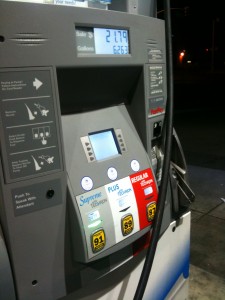 |
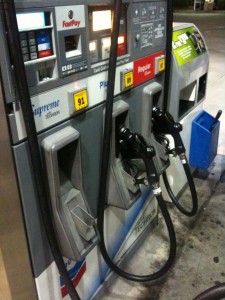 |
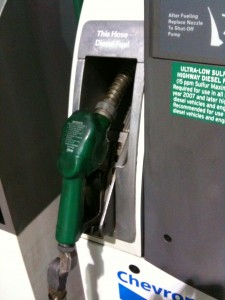 |
| Gasoline, single-nozzle |
Gasoline, multi-nozzle |
Diesel |
Insert nozzle . . . begin fueling
Fuel won’t flow till either the credit card is authorized, or the cashier approves the sale. Once approved, fueling can begin. Unscrew the fuel cap, insert the nozzle into the fuel tank, squeeze the lever, and then engage the lock (shown on the picture on the right).
Nozzle locks are great. They allow you to do other things while fueling, like cleaning your car’s windshield or grabbing a quick bite at the station convenience store. Once the tank is filled, a sensor in the nozzle automatically disengages these locks, making the fueling process painless.
While researching for this post, I was surprised to learn that there were literally dozens of nozzle brands. Here’s a sampling. One key difference between nozzles is the location of the lock. The photo above only shows one design. Others, like the one shown below, have the lock within the lever guard itself.
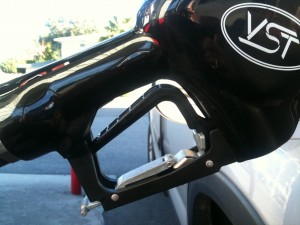 |
|
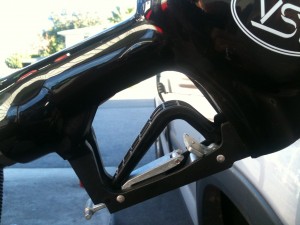 |
| Locked, fueling |
|
Released |
Return nozzle to cradle
Once fueling is done, and the nozzle is safely back in its cradle . . . don’t forget to screw the fuel cap back on.
Interestingly enough, forgetting this final step is not an all-too-rare occurrence. Googling for the terms “gas cap” + “forgot” yields a fair number of results. It’s . . . like . . . a special club.
My first weekend with my first rental car also marked the first time I took it to a gas station by myself. I’d been driving along city streets to work all week, and hadn’t been on the freeways yet. I resolved to change that that Saturday and figured that I’d tank up before did so.
I pulled up to a Union 76 close to my temporary apartment, filled up, and mentally went over my freeway route while waiting for the click of the nozzle lever that signaled a full tank. That click didn’t take long since I hadn’t really been driving around very much. Ready or not, the Interstate run was on.
While filling up, a police car pulled up to the fuel pump ahead of me. As I was getting ready to go, I couldn’t help but notice that the policeman was staring at me through his side mirror. Flashing lights and sirens didn’t mark my departure from the station. So I figured that was that.
Upon arrival at my destination, I discovered what he was staring at. Like a black tassel hanging from the side of the car, my fuel cap was hanging by its restraining cord, below a fully open fuel door. Happily it wasn’t raining.
Wait for additional instructions
Some gasoline stations use their machines to up-sell other services. Car wash services, for example, are often offered at a discount.
Make sure you answer all the prompts on the console to prevent others from taking advantage of your purchase.
This is a reasonable snapshot of how things go in California. Moving forward, will be more mindful of the experiences in other states. Till then . . . happy fueling.
